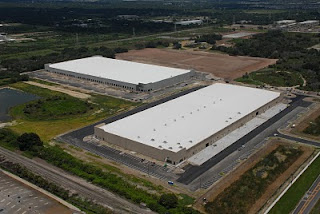Monday, July 12, 2010
Stretching Roof Life
One of the most difficult problems facing facility executives is getting the most out of their facility’s roofs. Why all the trouble with roofs? Part of it is due to the environment in which roofs must function. They are exposed to wind, rain, snow, hail, sunshine and birds and other animals. They must withstand temperature swings from well below freezing to over 180 degrees. They serve as a platform for building mechanical systems that can vibrate, inducing stress failures in roofing components, and they must survive foot traffic from maintenance personnel and building occupants.
With the strain that roofs are routinely exposed to, combined with the expense of roof replacement, it is logical to think that roofs would be a focus of attention for facility executives. In some facilities they are, and those executives have found that by following a comprehensive program for managing roof assets, they can lower life-cycle costs for roofs while reducing the frequency of leaks and emergency repairs.
But not all roofs are managed. Less than half of building owners ever file a claim against their roof’s warranty even though most roofs experience some problems during the warranty period. And many of those who do file a claim have it voided because they have not been doing the tasks necessary to maintain the warranty.
The difference between these two groups is how they view the roof. The group of facility executives that are successful in lowering roof costs view the roof as an asset to be managed. The others view the roof as a maintenance expense, focusing on replacing rather than managing.
Roof asset management is a process that begins with a thorough understanding of the installed roofing system. This is best derived from a comprehensive roof inspection. Evaluation of the inspection report along with data from subsequent inspections is used to develop a schedule and budget for major roof repairs and replacements.
The Benefits
One of the most significant benefits of managing roofs as an asset is that doing so will extend the life of the roof. While it will take money to perform the tasks required, asset management programs will result in roofs that typically last 25% to 50% longer. In some cases, they can even double the service life of a roof. The cost of setting up and operating the roof asset management program is typically recovered if the roof life is extended by only one year. Extended service lives beyond that first year will greatly reduce the life-cycle cost of the facility’s roof inventory.
Roof asset management also reduces roof maintenance costs. One of the reasons why maintenance costs for roofs are so high is that they often are performed on an emergency basis. When a leak or other problem with the roof occurs, it typically happens when the weather is less than ideal. Roof maintenance personnel are called in, sometimes on an emergency basis, and temporary repairs are made. Later, when conditions allow, they return and make the permanent repairs. Not only have there been two service calls, but damage to the roof, and possibly the building’s interior, has taken place.
A roof asset management program will not eliminate all emergency repairs, but it will reduce their frequency. And by identifying problems and taking action to correct them before they develop into leaks, the program will reduce damage to the roof and the building.
Another benefit of the program is better allocation of funds for roof repair and replacement. Many roofs are replaced before it is necessary to do so. Recurring leaks, surface deterioration, storm and wind damage combine to make facility executives think that it is necessary to replace a roof when routine maintenance and repair will extend the life of the roof. By implementing an asset management program, facility executives will have the information to determine if relatively minor repairs will correct the problem or if the roof is approaching the end of its life and requires replacement.
Realistic Budgets
Roof asset management programs allow managers to budget for roof replacement on a basis of need, not crisis. Replacement funds are usually used on the roof that is believed to be in the worst condition at the moment, but by establishing the condition of all roofs in all facilities, executives can set priorities based on real — not perceived — needs.
A major complaint from facility executives is that roof warranties are complicated and sometimes misleading. While it is true that it is difficult to process warranty claims with some installers, many denials of warranty claims are a result of the owner failing to conduct inspections and perform routine maintenance tasks required by the warranty.
Staying on Top
Treating roofs as assets will provide financial and performance returns for those willing to make the investment. But roof asset management is not a collect-and-forget system. It is a process. To be effective, keep up with the collecting, assessing and updating of data. The time and effort are well worth it.
Subscribe to:
Post Comments (Atom)


Couldn't have said it better myself. Your organization is very good at explaining roofing and the construction industry. As a fellow roofing co, we envy your effort and strive to keep up! You guys deserve the success you have. Want to share any secrets?
ReplyDelete